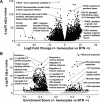This is a preprint.
Gene expression in soft-shell clam (Mya arenaria) transmissible cancer reveals survival mechanisms during host infection and seawater transfer
- PMID: 39345472
- PMCID: PMC11429866
- DOI: 10.1101/2024.09.13.612964
Gene expression in soft-shell clam (Mya arenaria) transmissible cancer reveals survival mechanisms during host infection and seawater transfer
Update in
-
Gene expression in soft-shell clam (Mya arenaria) transmissible cancer reveals survival mechanisms during host infection and seawater transfer.PLoS Genet. 2025 Mar 31;21(3):e1011629. doi: 10.1371/journal.pgen.1011629. eCollection 2025 Mar. PLoS Genet. 2025. PMID: 40163526 Free PMC article.
Abstract
Transmissible cancers are unique instances in which cancer cells escape their original host and spread through a population as a clonal lineage, documented in Tasmanian Devils, dogs, and ten bivalve species. For a cancer to repeatedly transmit to new hosts, these lineages must evade strong barriers to transmission, notably the metastasis-like physical transfer to a new host body and rejection by that host's immune system. We quantified gene expression in a transmissible cancer lineage that has spread through the soft-shell clam (Mya arenaria) population to investigate potential drivers of its success as a transmissible cancer lineage, observing extensive differential expression of genes and gene pathways. We observed upregulation of genes involved with genotoxic stress response, ribosome biogenesis and RNA processing, and downregulation of genes involved in tumor suppression, cell adhesion, and immune response. We also observe evidence that widespread genome instability affects the cancer transcriptome via gene fusions, copy number variation, and transposable element insertions. Finally, we incubated cancer cells in seawater, the presumed host-to-host transmission vector, and observed conserved responses to halt metabolism, avoid apoptosis and survive the low-nutrient environment. Interestingly, many of these responses are also present in healthy clam cells, suggesting that bivalve hemocytes may have inherent seawater survival responses that may partially explain why transmissible cancers are so common in bivalves. Overall, this study reveals multiple mechanisms this lineage may have evolved to successfully spread through the soft-shell clam population as a contagious cancer, utilizing pathways known to be conserved in human cancers as well as pathways unique to long-lived transmissible cancers.
Figures




References
Publication types
Grants and funding
LinkOut - more resources
Full Text Sources
